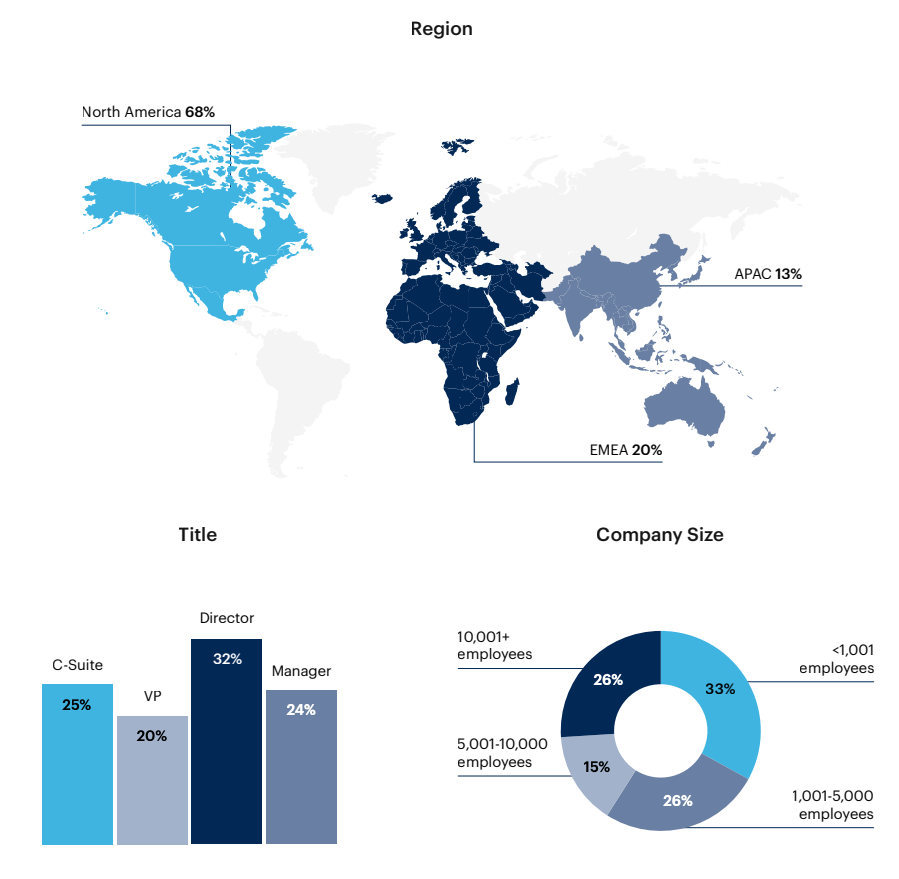Disaster Recovery Plans for IT
In the midst of a crisis, what policies, tools, and procedures are IT leaders putting first to enable the recovery of vital business systems?
One minute insights:
 Nearly every organization has a disaster recovery plan, and most without are either planning, developing, or deploying one
Nearly every organization has a disaster recovery plan, and most without are either planning, developing, or deploying one Even with plans in place, most don’t feel fully prepared for a disastrous event
Even with plans in place, most don’t feel fully prepared for a disastrous event Most IT leaders are reassessing their disaster recovery plans at least every 6 months
Most IT leaders are reassessing their disaster recovery plans at least every 6 months Cyber attacks and ransomware are still top of mind threats to business continuity
Cyber attacks and ransomware are still top of mind threats to business continuity
Disaster recovery plans are overwhelmingly popular
Nearly all respondents’ organizations have a disaster recovery plan.
Does your organization have a disaster recovery plan?

n = 300
Of those that don’t, half are in the planning, development, or deployment stage of their disaster recovery plans.
Are there plans to develop a disaster recovery plan within your organization?

n = 12

More than half of IT leaders say they have needed to refer to their disaster recovery plans for non-pandemic related reasons.
Other than for the Coronavirus pandemic, have you needed to refer to the disaster recovery plan for any reason since you’ve been employed at your current organization?
n = 288
Most feel highly informed about their IT disaster recovery plans, but are less confident in disaster event preparedness
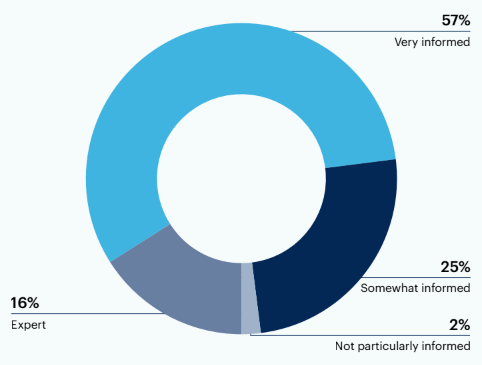
Uninformed 0%
74% of IT leaders are very or expertly informed about their organization’s IT disaster recovery plan.
How informed are you with your organization’s IT disaster recovery plan?
n = 288
Just 11% of respondents that have a disaster recovery plan feel fully prepared for a disaster recovery event.
On a scale of 1 - 5, 1 being not at all prepared and 5 being fully prepared, how prepared do you feel for a disaster recovery event?
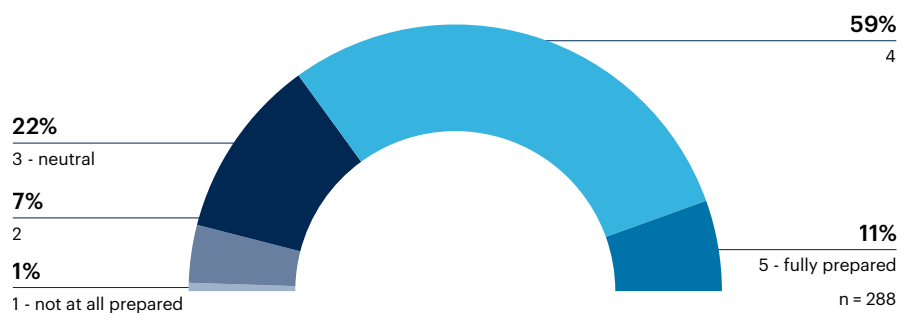
n = 288
We still need to mature our disaster recovery process... We had an attack at the end of 2020 and it took us over a week to return all applications, with some non-significant losses.
Simple data backup is the most common recovery method, with emerging technologies like BaaS not as popular
Backup (63%) and virtualization (53%) are the most common disaster recovery methods.
Which of the following best describes your disaster recovery method?
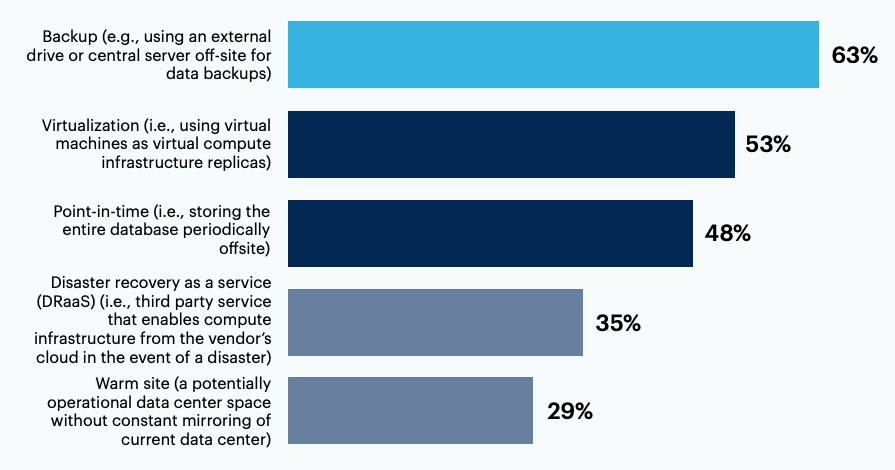
Backup as a service (BaaS) (i.e., third-party data backups using vendor storage) 27%, Hot site (an operational backup data center that mirrors the current data center) 25%, Cold site (a data center space that is not operationally ready) 21%, Other 1%, None of these <1%
n = 288
Return point objectives and return time objectives vary greatly
The most common approach to setting return point objectives (RPO) for mission critical data is to do so on an app by app basis (30%). 22% of respondents have an RPO of 1-6 hours for mission critical data.
What is your current return point objective (RPO) for mission critical data?
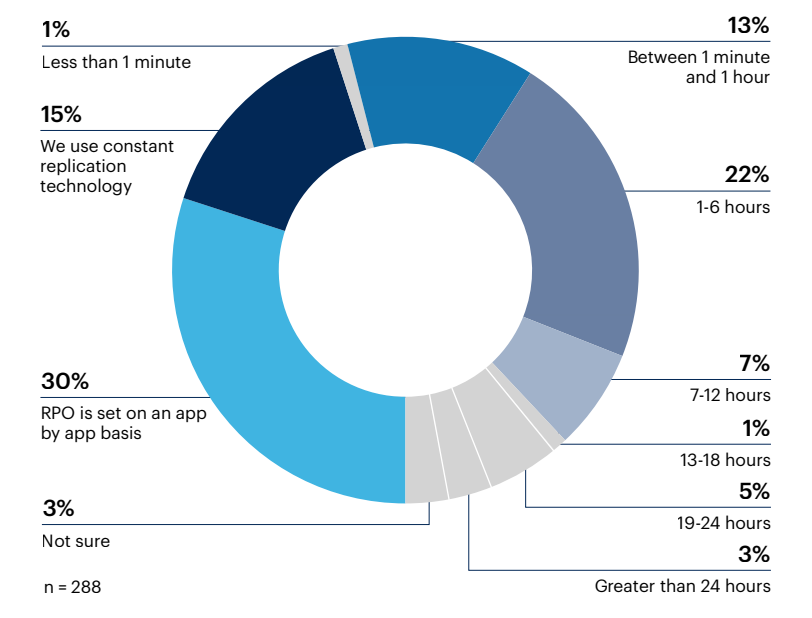
Similar to RPOs, return time objectives (RTO) are most commonly set on an app by app basis.
What is your current return time objective (RTO) for mission critical services?

n = 288
Most address disaster recovery plans at least once a year and struggle with manual recovery techniques
Most IT leaders (33%) address their disaster recovery plans on a quarterly basis. Just 13% address plans monthly or more frequently.
How frequently do you address your disaster recovery plan?
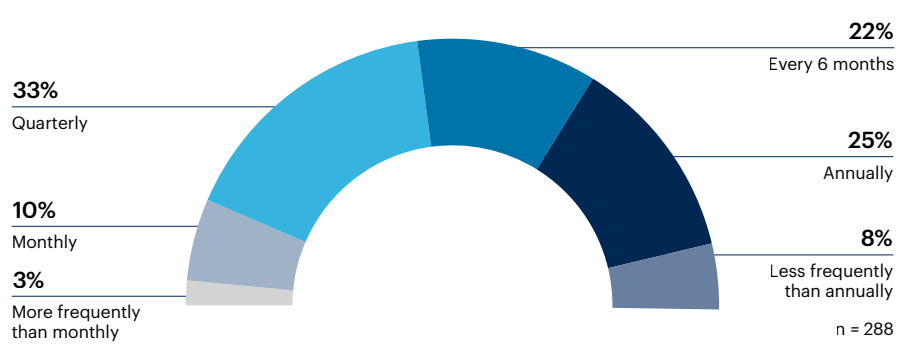
A good disaster recovery plan needs to evolve over time, as new technologies become available and it needs to focus on true business objectives, which change over time as well.
IT professionals cite manual recovery techniques (47%), lack of testing (46%) and having multiple recovery tools (37%) as their most common challenges.
Within your organization, are there any challenges regarding the disaster recovery plan?
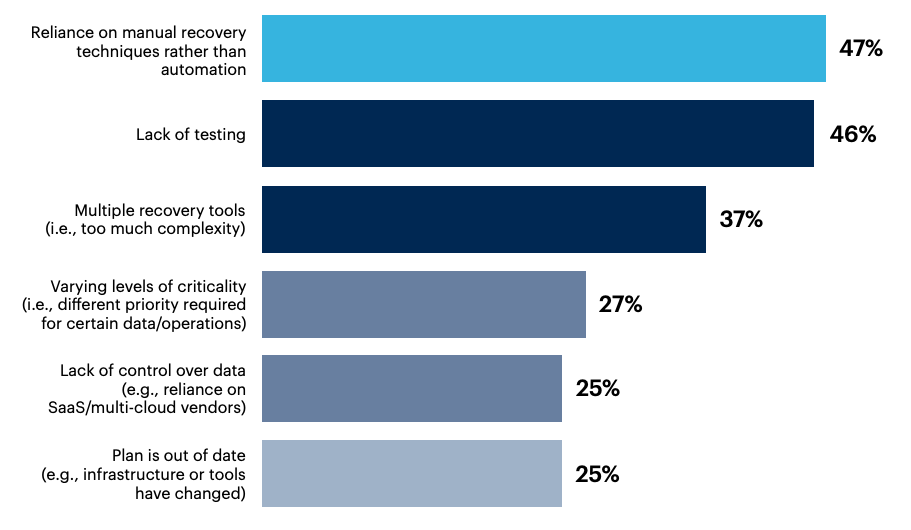
Tools are too expensive 22%, Poor information management (e.g., who is responsible for what?) 18%, Lack of executive support 10%, Lack of project leadership for disaster recovery 10%, Lack of training or educational materials for end users 10%, Lack of strategy 8%, None of these 5%, Other 1%
Cyber and ransomware attacks topping the threat list
74% of respondents say either ransomware encrypting data or cyberattacks on critical infrastructure are the top threats to their business continuity today.
What is the top threat to your business continuity currently?
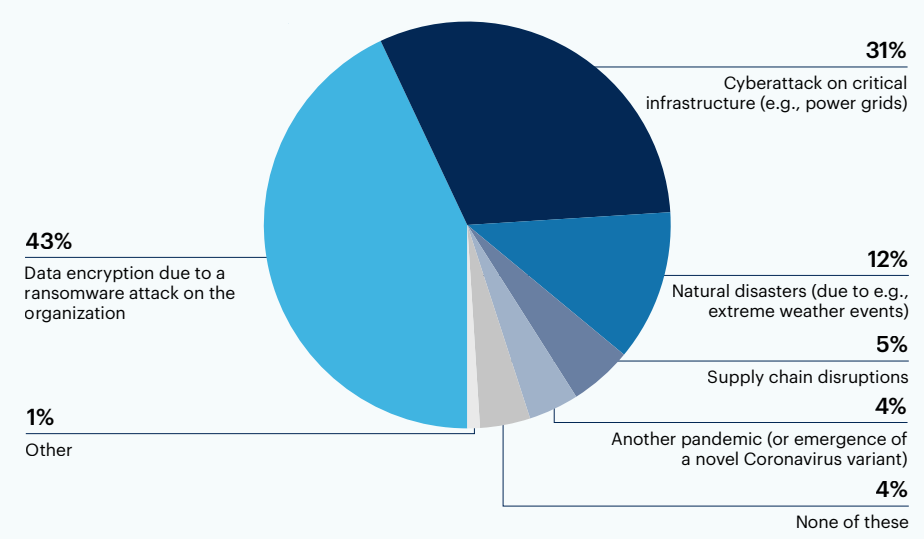
n = 300
Need more [strategy] in light of cyber attack threat.

Want more insights like this from leaders like yourself?
Click here to explore the revamped, retooled and reimagined Gartner Peer Community. You'll get access to synthesized insights and engaging discussions from a community of your peers.
Respondent Breakdown
